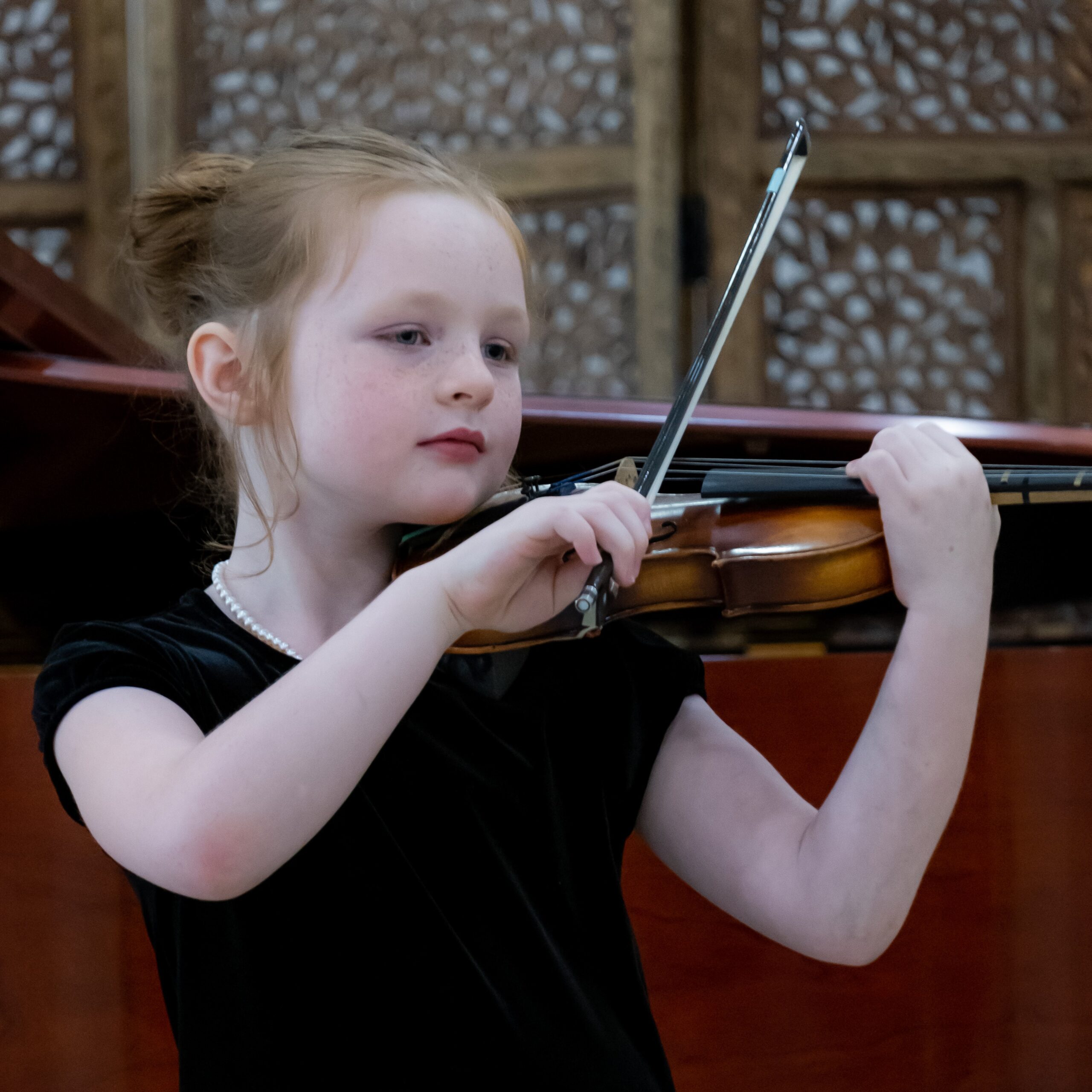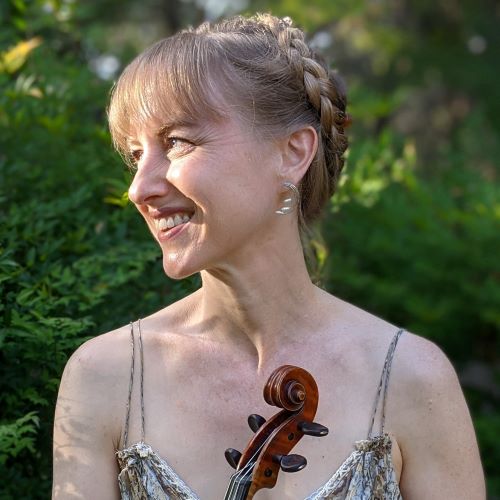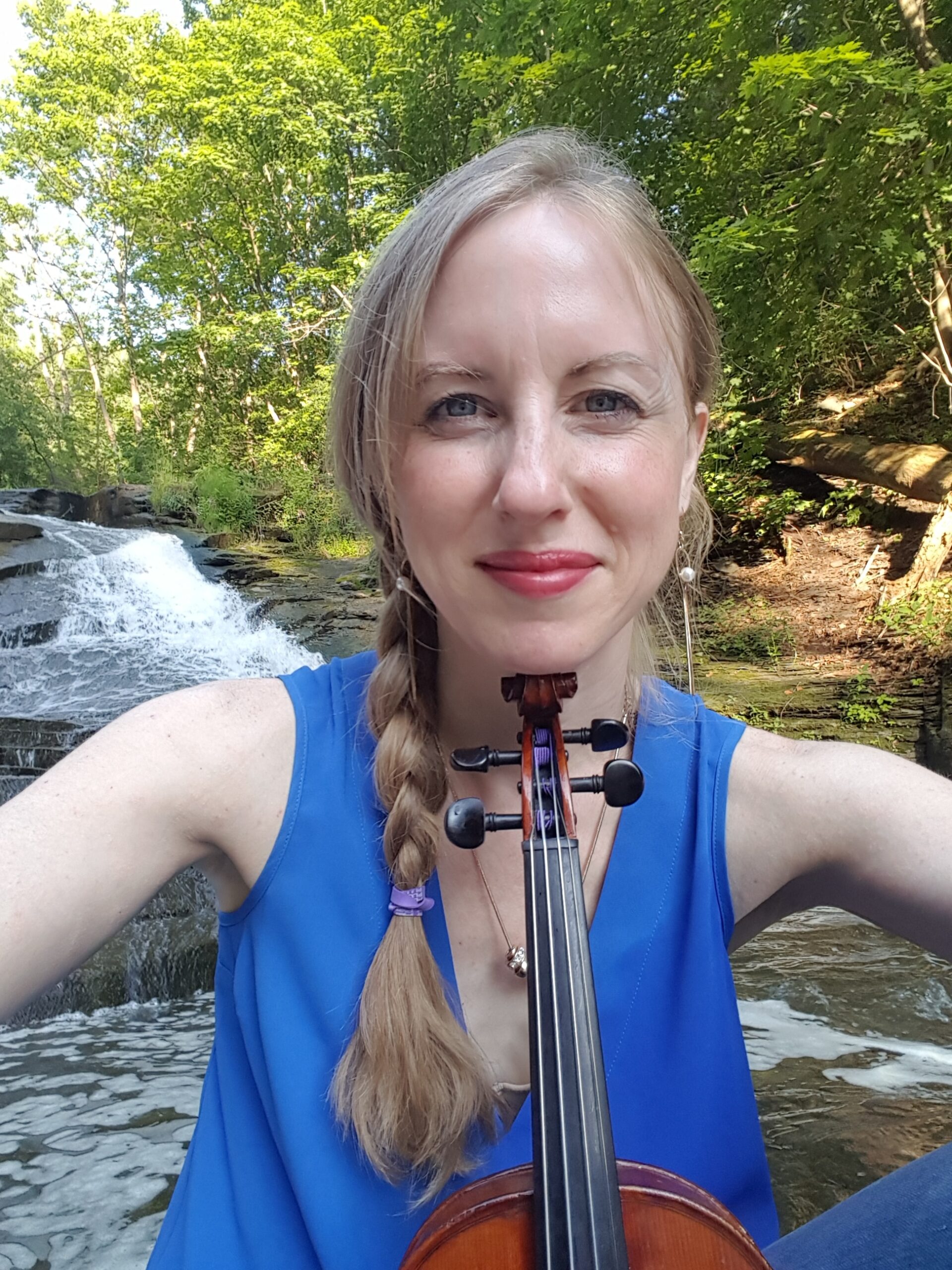Violin Book 2 Workshop: Expressive Foundations
Vibrato, Dynamic Movement, and Musical Expression
22-hour virtual teacher training seminar July 19-30, 2021

 As your students begin Book 2, they have the rudimentary skills of violin playing and are ready for a deeper musical experience.
As your students begin Book 2, they have the rudimentary skills of violin playing and are ready for a deeper musical experience.
The rich emotional palette of Book 2 allows the teacher a diverse landscape for teaching dynamics, whole body movement, and vibrato. These skills will add grace and balance to the student’s Bach and Vivaldi, and will blossom into a passionate performance of Bruch in a few years’ time.
An intellectual as well as an artist, Ms. Winters has made a major contribution to the field of violin pedagogy. Integrating her knowledge of psychology, education, kinesiology, and music, Ms. Winters takes the best of all the major schools of violin pedagogy and adds her unique methods.
—Ruth N., Orpheus Academy of Music
When watching an world-class violinist, the music seems to emanate from their whole body.
Each note of a masterful violin performance is part of a visual choreography in which the movement and the music are seemingly intertwined.
All of this appears completely natural … but when the teacher can tap into this whole-body expression, it lights the fire of students’ passion for music, and the natural, purposeful movement informs each stage of their development.
Join us this summer for an exploration into the whole-body dynamic of violin playing.
Book 2 Course Content
Playing By Ear
In Book 1 the solfège allows students to learn the notes of the song “by ear,” but in a rote way. Now that they are more fluent on violin, it is time for them to genuinely learn how to play by ear.
Learn how to develop students’ ability to hear pitches and decode songs, and how to incorporate this into their repertoire learning.
Vibrato
The training will include a full sequence that will allow your students to acquire a perfect beginning vibrato in less than three months.
Preparatory exercises you may be familiar with will be explained in greater depth, and you will be able to trouble-shoot common roadblocks.
Teaching vibrato is actually easy and effortless once all of the component skills are clear!
Whole-Body Movement
During the first year of playing, it is often enough to learn how to draw a straight bow and place the fingers in tune. As students advance, they are ready discover the capabilities which give their playing an effortless and dynamic quality. These are the same qualities which make a famous performers look like they’re “really into the music,” but which are purposeful and serve a real function.
Teachers will answer the following questions and more:
- How is ballistic motion used in both staccato and legato?
- What is the physics of tone production at the at the tip?
- Why does bending the knees make it easier to create tone at the tip?
- How should the physical position of the body be different when playing at the tip and frog?
- How do bent knees increase acceleration on up-bow?
- If bent knees help make up-bows more powerful, how can they also make down-bows more powerful?
Dancing with gravity is intrisically enjoyable. Students are excited to discover a new dimension in their musical expression with the introduction of whole-body playing.
Bow Choreography
In the latter part of Book 2, students begin to incorporate techniques such as accents, bow lifts, spiccato, and more complex bow division.
These techniques are a preparation for the more sophisticated pieces they will play in the next stage of their development.
Course
Details
The workshop will comprise 22 online seminar hours plus 10 hours of video lesson observations completed outside of class.
SCHEDULE:
July 19-30, 2021
Mon-Fri
11:00 – 1:30 CST
Time Zones:
12-2:30 EST
9-11:30 PST
18-20:30 CEST
Time zone calculator
Limit: 15 participants
$350 early registration
($375 after May 15)
HOMEWORK:
There is approximately one hour of homework outside class each day.
One payment of $350
-or-
3 easy payments of $120
Need-based scholarship is available. Please write Roger at [email protected].
The course is limited to 15 participants. Register now to ensure your participation.
Questions? Email [email protected].
One payment and you’re finished:
Three budget-friendly payments:
Frequently Asked Questions
Who should take the course?
The course will be valuable to any teacher of young students, regardless of repertoire. The movement and vibrato principles will be applicable to all students, including advanced players.
What is the workload?
While the course meets only for 2 1/2 hours Monday thru Friday, participants are suggested to schedule themselves lightly to allow time to fully process and reflect upon the new principles. There will be a lesson video to watch each evening which illustrates the principles in action.
Is there a prerequisite?
Completion of the Kaleidoscopes Book 1 course is not required; the content of the two courses is distinct. Graduates of the Book 1 workshop will be able to process the principles more deeply and undertand students’ evolution through the two books.
Can I take both courses?
Yes, absolutely. The timing of the courses is designed to allow them to be taken back-to-back. To register for both courses (at a discount), click here.

About the Presenter
Elise Winters holds a B.A. from Rice University and a Master of Social Work from the University of Texas, with coursework in violin performance, linguistics, neurolinguistics, cognitive neuroscience, and cognition.
She completed her 3-year Kodaly training at Indiana University Jacobs School of Music. A former student of Ronda Cole, her Suzuki teacher trainers include Judy Bossuat-Gallic, Cathy Lee, Marilyn O’Boyle, Doris Preucil, Edward Kreitman, and Charles Krigbaum.
Elise has performed as a member of the Austin Symphony, Austin Lyric Opera, and the Grammy Award-winning Conspirare choir, and appears regularly as guest concertmistress of La Follia Austin Baroque. She is a published author with Oxford University Press and author of Kaleidoscopes for Violin, which blends Montessori and Kodaly principles within a Suzuki framework.
Elise’s passions include art and visual design, biomechanics, Five Rhythms dance, and sustainability. She directs a full-time studio of 50 students in Austin, Texas.
“An intellectual as well as an artist, Ms. Winters has made a major contribution to the field of violin pedagogy.
Integrating her knowledge of psychology, education, kinesiology, and music, Ms. Winters takes the best of all the major schools of violin pedagogy and adds her unique methods. I wish Ms. Winters had been my pedagogy professor in college or grad school. If I were seeking a degree in pedagogy, I would certainly study under her.”
— Ruth Navarre, Orpheus Academy of Music
Wow — my heart is full. Trusting my inner voice. Making discoveries together, providing a safe space for discoveries to be made. Being a guide… and letting the wonder and curiosity I have lead me in leaving clues for my students to follow their own curiosity and wonder. So many ideas I am eager to share with my students!
— C.H., Violin Teacher
Williamsport, PA

